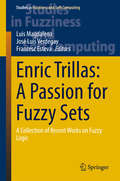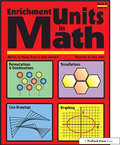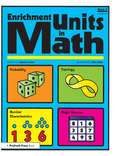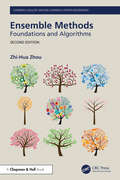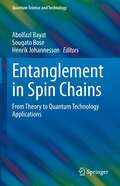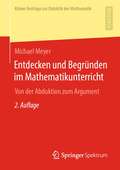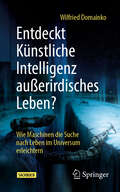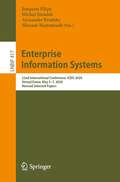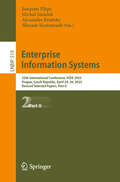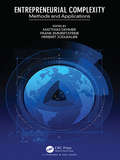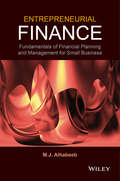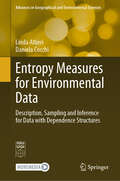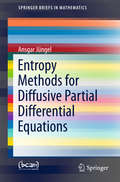- Table View
- List View
Enjeux contemporains de l'éducation scientifique et technologique (Collection Questions en éducation)
by Hasni, Abdelkrim; Lebeaume, JoëlAu cours de la dernière décennie, l’enseignement scolaire au Québec et en France a été profondément renouvelé et reconfiguré par des actions publiques en matière d’éducation et par les missions affectées à l’enseignement obligatoire. Les auteurs de cet ouvrage considèrent cette problématique en éducation scientifique et technologique. Ils montrent à la fois la diversité et la complémentarité des reconfigurations contemporaines de l’éducation scientifique et technologique dans la scolarité, touchant des sujets tels que l’enseignement général, l’enseignement agricole, la formation des enseignants, la formation citoyenne et l’éducation à l’environnement et au développement durable. Par les thématiques abordées, ils questionnent autant les curriculums dans leurs relations aux pratiques d’enseignement en classe que les impacts sur les objets et les questions de recherche en didactique. Avec des articles rédigés par Pierre Degret, Marc Boutet, André Giordan, Jean-Louis Martinand, Ghislain Samson et Laurence Simonneaux.
Enjoyable Econometrics
by Philip Hans FransesEconometrics can at first appear a highly technical subject, but it can also equip the practitioner with a useful skillset of smart ways to formulate research questions and collect data. Enjoyable Econometrics applies econometric methods to a variety of unusual and engaging research questions, often beyond the realm of economics, demonstrating the great potential of using such methods to understand a wide range of phenomena. Unlike the typical textbook approach, Enjoyable Econometrics follows in the footsteps of Freakonomics by posing interesting questions first before introducing the methodology to find the answers. Therefore, rather than equation-heavy sections based around complex methodologies, the reader is presented with chapters on 'Money' and 'Fashion, Art and Music'. Franses writes in a way that will enthuse and motivate the economics student embarking upon the essential study of econometrics. Indeed, the book shows that econometric methods can be applied to almost anything.
Enlargement of Filtration with Finance in View
by Monique Jeanblanc Anna AksamitIn addition to presenting the basic theory of enlargement of filtrations, this book also includes new material and applications to finance. The main results are applied to give conditions which ensure that new information does not provide arbitrage opportunities, and in those cases where the arbitrages exist, they are explicitly constructed. Numerous examples are provided together with a list of recent papers on the subject. The presentation has been kept as simple as possible. In particular, sophisticated new results are given without proofs. Addressing the question of how to model and study new information flows, the theory of enlargement of filtrations is used in credit risk modeling, insider trading and in the study of asymmetric information. This book fills a gap in the literature and will be useful to students and researchers interested in the role of information, both in financial mathematics and in econometric science.
Enlightening Symbols: A Short History of Mathematical Notation and Its Hidden Powers
by Joseph MazurAn entertaining look at the origins of mathematical symbolsWhile all of us regularly use basic math symbols such as those for plus, minus, and equals, few of us know that many of these symbols weren't available before the sixteenth century. What did mathematicians rely on for their work before then? And how did mathematical notations evolve into what we know today? In Enlightening Symbols, popular math writer Joseph Mazur explains the fascinating history behind the development of our mathematical notation system. He shows how symbols were used initially, how one symbol replaced another over time, and how written math was conveyed before and after symbols became widely adopted.Traversing mathematical history and the foundations of numerals in different cultures, Mazur looks at how historians have disagreed over the origins of the numerical system for the past two centuries. He follows the transfigurations of algebra from a rhetorical style to a symbolic one, demonstrating that most algebra before the sixteenth century was written in prose or in verse employing the written names of numerals. Mazur also investigates the subconscious and psychological effects that mathematical symbols have had on mathematical thought, moods, meaning, communication, and comprehension. He considers how these symbols influence us (through similarity, association, identity, resemblance, and repeated imagery), how they lead to new ideas by subconscious associations, how they make connections between experience and the unknown, and how they contribute to the communication of basic mathematics.From words to abbreviations to symbols, this book shows how math evolved to the familiar forms we use today.
Enric Trillas: A Passion for Fuzzy Sets
by Luis Magdalena José Luis Verdegay Francesc Esteva(Preliminary) The book is a comprehensive collection of the most recent and significant research and applications in the field of fuzzy logic. It covers fuzzy structures, systems, rules, operations as well as important applications, e. g in decision making, environmental prediction and prevention, and communication. It is dedicated to Enric Trillas as an acknowledgement for his pioneering research in the field. The book include a foreword by Lotfi A. Zadeh.
Enrichment Units in Math: Book 1, Grades 2-3
by Judy LeimbackGo beyond the regular curriculum with these units to challenge your more able primary grade math students. With their ease of use, clear instruction, and motivating topics, these are the perfect enrichment activities for the regular math curriculum. This book contains four units that are structured so that students can easily develop an understanding of the topics on their own. The four topics are: attribute pattern blocks, tangrams, sets and Venn diagrams, and ancient Egyptian numbers.Each unit provides sequential activities that allow students to work through these motivating topics, whether they are working by themselves, in a small group, or in a whole-class setting. The units lend themselves easily to a math center arrangement with each student having an individual folder and checklist to record his or her progress. While they were designed to provide added challenge for students who have mastered the regular curriculum, some of the units can be used as supplements for whole-class instruction. The emphasis in these units is on promoting thinking, developing perseverance, expanding students' view of mathematics, enjoying a challenge, and keeping math students actively involved and enthused about math. This book will help you provide students with opportunities to explore mathematical ideas in ways that promote their intellectual growth and expand their views of mathematics.This is one of a three-book series. For older students, use Enrichment Units in Math Book 2—permutations and combinations, tessellations, line drawings, and graphing; and Enrichment Units in Math Book 3—probability, topology, number characteristics, and magic squares.For other math units to extend the math curriculum and provide opportunities to work independently, see Math Extension Units Book 1 andBook 2.Grades 2-3
Enrichment Units in Math: Book 2, Grades 4-6
by Dianne Draze Judy LeimbachGo beyond the regular curriculum with these units to challenge your more able intermediate grade math students. With their ease of use, clear instruction, and motivating topics, these are the perfect enrichment activities for the regular math curriculum. This book contains four units that are structured so that students can easily develop an understanding of the topics on their own. The four topics are: permutations and combinations, tessellations, line drawings, and graphing.Each unit provides sequential activities that allow students to work through these motivating topics, whether they are working by themselves, in a small group, or in a whole-class setting. The units lend themselves easily to a math center arrangement with each student having an individual folder and checklist to record his or her progress. While they were designed to provide added challenge for students who have mastered the regular curriculum, some of the units can be used as supplements for whole-class instruction. The emphasis in these units is on promoting thinking, developing perseverance, expanding students' view of mathematics, enjoying a challenge, and keeping math students actively involved and enthused about math. This book will help you provide students with opportunities to explore mathematical ideas in ways that promote their intellectual growth and expand their views of mathematics. This is one of a three-book series. The other books cover the following topics: Enrichment Units in Math Book 1—attribute pattern blocks, tangrams, sets and Venn diagrams, and ancient Egyptian numbers; and Enrichment Units in Math Book 3—probability, topology, magic squares, and number characteristics.For other math units to extend the math curriculum and provide opportunities to work independently, see Math Extension Units Book 1 and Book 2. Grades 4-6
Enrichment Units in Math: Book 3, Grades 5-7
by Dianne DrazeGo beyond the regular curriculum with these units to challenge your more able intermediate grade math students. With their ease of use, clear instruction, and motivating topics, these are the perfect enrichment activities for the regular math curriculum. This book contains four units that are structured so that students can easily develop an understanding of the topics on their own. The four topics are: probability, topology, magic squares, and number characteristics. Each unit provides sequential activities that allow students to work through these motivating topics, whether they are working by themselves, in a small group, or in a whole-class setting. The units lend themselves easily to a math center arrangement with each student having an individual folder and checklist to record his or her progress. While they were designed to provide added challenge for students who have mastered the regular curriculum, some of the units can be used as supplements for whole-class instruction. The emphasis in these units is on promoting thinking, developing perseverance, expanding students' view of mathematics, enjoying a challenge, and keeping math students actively involved and enthused about math. This book will help you provide students with opportunities to explore mathematical ideas in ways that promote their intellectual growth and expand their views of mathematics. This is one of a three-book series. For younger students, see Enrichment Units in Math Book 1—attribute pattern blocks, tangrams, sets and Venn diagrams, and ancient Egyptian numbers; and Enrichment Units in Math Book 2—permutations and combinations, tessellations, line drawings, and graphing. For other math units to extend the math curriculum and provide opportunities to work independently, see Math Extension UnitsBook 1 and Book 2.Grades 5-7
Ensemble Classification Methods with Applications in R
by Esteban Alfaro Matías Gámez Noelia GarcíaAn essential guide to two burgeoning topics in machine learning – classification trees and ensemble learning Ensemble Classification Methods with Applications in R introduces the concepts and principles of ensemble classifiers methods and includes a review of the most commonly used techniques. This important resource shows how ensemble classification has become an extension of the individual classifiers. The text puts the emphasis on two areas of machine learning: classification trees and ensemble learning. The authors explore ensemble classification methods’ basic characteristics and explain the types of problems that can emerge in its application. Written by a team of noted experts in the field, the text is divided into two main sections. The first section outlines the theoretical underpinnings of the topic and the second section is designed to include examples of practical applications. The book contains a wealth of illustrative cases of business failure prediction, zoology, ecology and others. This vital guide: Offers an important text that has been tested both in the classroom and at tutorials at conferences Contains authoritative information written by leading experts in the field Presents a comprehensive text that can be applied to courses in machine learning, data mining and artificial intelligence Combines in one volume two of the most intriguing topics in machine learning: ensemble learning and classification trees Written for researchers from many fields such as biostatistics, economics, environment, zoology, as well as students of data mining and machine learning, Ensemble Classification Methods with Applications in R puts the focus on two topics in machine learning: classification trees and ensemble learning.
Ensemble Methods: Foundations and Algorithms (Chapman & Hall/CRC Machine Learning & Pattern Recognition)
by Zhi-Hua ZhouAn up-to-date, self-contained introduction to a state-of-the-art machine learning approach, Ensemble Methods: Foundations and Algorithms shows how these accurate methods are used in real-world tasks. It gives you the necessary groundwork to carry out further research in this evolving field.After presenting background and terminology, the book cover
Ensemble Methods: Foundations and Algorithms (Chapman & Hall/CRC Machine Learning & Pattern Recognition)
by Zhi-Hua ZhouEnsemble methods that train multiple learners and then combine them to use, with Boosting and Bagging as representatives, are well-known machine learning approaches. It has become common sense that an ensemble is usually significantly more accurate than a single learner, and ensemble methods have already achieved great success in various real-world tasks.Twelve years have passed since the publication of the first edition of the book in 2012 (Japanese and Chinese versions published in 2017 and 2020, respectively). Many significant advances in this field have been developed. First, many theoretical issues have been tackled, for example, the fundamental question of why AdaBoost seems resistant to overfitting gets addressed, so that now we understand much more about the essence of ensemble methods. Second, ensemble methods have been well developed in more machine learning fields, e.g., isolation forest in anomaly detection, so that now we have powerful ensemble methods for tasks beyond conventional supervised learning.Third, ensemble mechanisms have also been found helpful in emerging areas such as deep learning and online learning. This edition expands on the previous one with additional content to reflect the significant advances in the field, and is written in a concise but comprehensive style to be approachable to readers new to the subject.
Entanglement in Spin Chains: From Theory to Quantum Technology Applications (Quantum Science and Technology)
by Abolfazl Bayat Sougato Bose Henrik JohannessonThis book covers recent developments in the understanding, quantification, and exploitation of entanglement in spin chain models from both condensed matter and quantum information perspectives. Spin chain models are at the foundation of condensed matter physics and quantum information technologies and elucidate many fundamental phenomena such as information scrambling, quantum phase transitions, and many-body localization. Moreover, many quantum materials and emerging quantum devices are well described by spin chains. Comprising accessible, self-contained chapters written by leading researchers, this book is essential reading for graduate students and researchers in quantum materials and quantum information. The coverage is comprehensive, from the fundamental entanglement aspects of quantum criticality, non-equilibrium dynamics, classical and quantum simulation of spin chains through to their experimental realizations, and beyond into machine learning applications.
Entdecken und Begründen im Mathematikunterricht: Von der Abduktion zum Argument (Kölner Beiträge zur Didaktik der Mathematik)
by Michael MeyerDas Entdecken und das Begründen im Mathematikunterricht bilden das Thema der vorliegenden Arbeit. Sowohl auf theoretischer als auch auf empirischer Basis wird eine mathematikdidaktische Theorie vorgestellt, die sowohl Begründungen als auch Entdeckungen sowie ihre Zusammenhänge beim Mathematiklernen zu analysieren ermöglicht. So wird es möglich, die Kreativität von Hypothesen, die Plausibilität von Hypothesen, den Begründungsbedarf von Hypothesen, die Schlüssigkeit bzw. Überzeugungskraft von Begründungen sowie die Interaktionsprozesse zwischen Lehrer*innen und Schüler*innen beim Entdecken und Begründen zu erfassen. Rekonstruktionen mathematischer Lernprozesse verdeutlichen die Anwendbarkeit und innere Kohärenz des erstellten Begriffsnetzes.
Entdeckt Künstliche Intelligenz außerirdisches Leben?: Wie Maschinen die Suche nach Leben im Universum erleichtern
by Wilfried DomainkoDie Entdeckung von Leben auf anderen Himmelskörpern würde nahelegen, dass es mehrere Wege zur Entstehung und Entwicklung von komplexen Wesen gibt und würde damit unsere Sicht auf das Universum dramatisch verändern. Entsprechend gibt es derzeit eine Vielzahl an astrobiologischen Forschungsprogrammen. Diese Untersuchungen werden entweder vor Ort auf Himmelskörpern in unserem Sonnensystem oder mittels Fernerkundung mit spezialisierten Teleskopen auf Planeten in anderen Sternsystemen durchgeführt. Ferner können durch das Studium von extremen Lebensräumen auf der Erde Rückschlüsse auf mögliche extraterrestrische Habitate gezogen werden. In diesem Buch werden verschiedenen Ansätzen bei der Suche nach außerirdischem Leben vorgestellt. Eine Künstliche Intelligenz kann für diese Fahndung vorteilhaft eingesetzt werden. Sie durchforstet Daten und kann dabei kleinste Hinweise auf die Aktivitäten von Leben finden. Des Weiteren kann sie bei vor-Ort-Untersuchungen in unserem Sonnensystem selbstfahrende Rover, autonome Drohnen und selbst-navigierende U-Boote steuern. Daher werden in diesem Buch die vielfältigen Anwendungsmöglichkeiten von künstlicher Intelligenz bei der Lebenssuche aufgezeigt. Die große Zahl an Forschungsprogrammen in diesem Bereich hat zu einer komplexen Informationslage geführt. Intelligente Dialogsysteme, welche einen substantiellen Teil des Wissens der Menschheit analysieren, werden daher mittlerweile zur Informationsbeschaffung und Informationszusammenführung eingesetzt. Mit Hilfe dieser Künstlichen Intelligenzen generierte Blickwinkel auf Fragen der Lebenssuche auf anderen Himmelskörpern werden in diesem Buch ebenfalls diskutiert.
Enterprise Information Systems: 22nd International Conference, ICEIS 2020, Virtual Event, May 5–7, 2020, Revised Selected Papers (Lecture Notes in Business Information Processing #417)
by Joaquim Filipe Slimane Hammoudi Michał Śmiałek Alexander BrodskyThis book constitutes extended, revised and selected papers from the 22nd International Conference on Enterprise Information Systems, ICEIS 2020, held online during May 5-7, 2020.The 41 papers presented in this volume were carefully reviewed and selected for inclusion in this book from a total of 255 submissions. They were organized in topical sections as follows: database and information systems integration; artificial intelligence and decision support systems; information systems analysis and specification; software agents and internet computing; human-computer interaction; and enterprise architecture.
Enterprise Information Systems: 23rd International Conference, ICEIS 2021, Virtual Event, April 26–28, 2021, Revised Selected Papers (Lecture Notes in Business Information Processing #455)
by Joaquim Filipe Slimane Hammoudi Michał Śmiałek Alexander BrodskyThis book contains extended, revised and selected papers from the 23rd International Conference on Enterprise Information Systems, ICEIS 2021, held online during April 2021. The 26 papers presented in this volume were carefully reviewed and selected for inclusion from a total of 241 submissions. They are grouped in sections on databases and information systems integration, artificial intelligence and decision support systems, information systems analysis and specification, software agents and internet computing, human-computer interaction, and enterprise architecture.
Enterprise Information Systems: 24th International Conference, ICEIS 2022, Virtual Event, April 25–27, 2022, Revised Selected Papers (Lecture Notes in Business Information Processing #487)
by Joaquim Filipe Slimane Hammoudi Michał Śmiałek Alexander BrodskyThis book constitutes the refereed post-conference proceedings of the 24th International Conference on Enterprise Information Systems, ICEIS 2022, This conference was held virtually due to the COVID-19 crisis, during April 25-27, 2022.The 20 full papers included in this book were carefully reviewed and selected from 197 submissions. They were organized in topical sections as follows: Databases and Information Systems Integration; Artificial Intelligence and Decision Support Systems; Information Systems Analysis and Specification; Human-Computer Interaction; and Enterprise Architecture.
Enterprise Information Systems: 25th International Conference, ICEIS 2023, Prague, Czech Republic, April 24–26, 2023, Revised Selected Papers, Part I (Lecture Notes in Business Information Processing #518)
by Joaquim Filipe Slimane Hammoudi Michał Śmiałek Alexander BrodskyThis two-volume set constitutes the refereed post-conference proceedings of the 25th International Conference on Enterprise Information Systems, ICEIS 2023, which was held in Prague, Czech Republic, during April 2023. The 41 full papers and 66 short papers presented were carefully reviewed and selected from 213 submissions. They are organized in topical sections as follows: Part One : Databases and Information Systems Integration; Artificial Intelligence and Decision Support Systems; and Information Systems Analysis and Specification. Part Two : Software Agents and Internet Computing; Human-Computer Interaction; and Enterprise Architecture.
Enterprise Information Systems: 25th International Conference, ICEIS 2023, Prague, Czech Republic, April 24–26, 2023, Revised Selected Papers, Part II (Lecture Notes in Business Information Processing #519)
by Joaquim Filipe Slimane Hammoudi Michał Śmiałek Alexander BrodskyThe two-volume set LNBIP 518 and 519 constitutes the refereed post-conference proceedings of the 25th International Conference on Enterprise Information Systems, ICEIS 2023, which was held in Prague, Czech Republic, during April 2023. The 30 full papers included in these proceedings were carefully reviewed and selected from a total of 213 submissions. They are organized in topical sections as follows: Part One : Databases and Information Systems Integration; Artificial Intelligence and Decision Support Systems; and Information Systems Analysis and Specification. Part Two : Software Agents and Internet Computing; Human-Computer Interaction; and Enterprise Architecture.
Entire Slice Regular Functions
by Daniele C. Struppa Irene Sabadini Fabrizio ColomboThis Briefs volume develops the theory of entire slice regular functions. It is the first self-contained, monographic work on the subject, offering all the necessary background information and detailed studies on several central topics, including estimates on the minimum modulus of regular functions, relations between Taylor coefficients and the growth of entire functions, density of their zeros, and the universality properties. The proofs presented here shed new light on the nature of the quaternionic setting and provide inspiration for further research directions. Also featuring an exhaustive reference list, the book offers a valuable resource for graduate students, postgraduate students and researchers in various areas of mathematical analysis, in particular hypercomplex analysis and approximation theory.
Entrepreneurial Complexity: Methods and Applications
by Matthias Dehmer Frank Emmert-Streib Herbert JodlbauerEntrepreneurial Complexity: Methods and Applications deals with theoretical and practical results of Entrepreneurial Sciences and Management (ESM), emphasising qualitative and quantitative methods. ESM has been a modern and exciting research field in which methods from various disciplines have been applied. However, the existing body of literature lacks the proper use of mathematical and formal models; individuals who perform research in this broad interdisciplinary area have been trained differently. In particular, they are not used to solving business-oriented problems mathematically. This book utilises formal techniques in ESM as an advantage for developing theories and models which are falsifiable. Features Discusses methods for defining and measuring complexity in entrepreneurial sciences Summarises new technologies and innovation-based techniques in entrepreneurial sciences Outlines new formal methods and complexity-models for entrepreneurship To date no book has been dedicated exclusively to use formal models in Entrepreneurial Sciences and Management
Entrepreneurial Finance
by M. J. AlhabeebFeaturing key topics within finance, small business management, and entrepreneurship to develop and maintain prosperous business venturesWith a comprehensive and organized approach to fundamental financial theories, tools, and management techniques, Entrepreneurial Finance: Fundamentals of Financial Planning and Management for Small Business equips readers with the necessary fundamental knowledge and advanced skills to succeed in small firm and business settings. With a unique combination of topics from finance, small business management, and entrepreneurship, the book prepares readers for the challenges of today's economy.Entrepreneurial Finance: Fundamentals of Financial Planning and Management for Small Business begins with key concepts of small business management and entrepreneurship, including management tools and techniques needed to establish, run, and lead business ventures. The book then delves into how small businesses are operated, managed, and controlled. General finance skills and methods are integrated throughout, and the book also features:Numerous practical examples and scenarios that provide a real-world perspective on entrepreneurship and small business managementA brief summary, list of key concepts, and ten discussion questions at the end of each chapter to prepare readers for the challenges of today's economyA practical guide to the complete life of a small business, from establishing a new venture to training and developing young entrepreneurs tasked with maintaining and developing a prosperous economyAn in-depth discussion of the entire process of writing a successful business plan, including the rationale, significance, and requirementsTechniques needed to solidify the free enterprise tradition, develop entrepreneurial strategies, and grow small businessesEntrepreneurial Finance: Fundamentals of Financial Planning and Management for Small Business is an ideal textbook for upper-undergraduate and first-year graduate courses in entrepreneurial finance within business, economics, management science, and public administration departments. The book is also useful for MBA-level courses as well as for business and management PhD majors as a resource in methodology. The book is also an idea reference for entrepreneurs, business managers, market analysts, and decision makers who require information about the theoretical and quantitative aspects of entrepreneurial finance.
Entropies and Fractionality: Entropy Functionals, Small Deviations and Related Integral Equations (Chapman & Hall/CRC Numerical Analysis and Scientific Computing Series)
by Yuliya Mishura Kostiantyn RalchenkoEntropies and Fractionality: Entropy Functionals, Small Deviations and Related Integral Equations starts with a systematization and calculation of various entropies (Shannon, Rényi, and some others) of selected absolutely continuous probability distributions. The properties of the entropies are analyzed. Subsequently, a related problem is addressed: the computation and investigation of the properties of the entropic risk measure, Entropic Value-at-Risk (EVaR).Next, the book computes and compares entropy values for the one-dimensional distributions of various fractional Gaussian processes. Special attention is then given to fractional Gaussian noise, where the authors conduct a detailed analysis of the properties and asymptotic behavior of Shannon entropy. Additionally, two alternative entropy functionals are introduced which are more suitable for analytical investigation.Furthermore, relative entropy functionals for the sum of two independent Wiener processes with drift are considered, and their minimization and maximization are explored. A similar problem is addressed for a mixed fractional Brownian motion (i.e., the sum of a Wiener process and a fractional Brownian motion) with drift. The entropy minimization problem is reduced to a Fredholm integral equation of the second kind, and its unique solvability is thoroughly investigated.In the final part of the book, the optimization of small deviations for mixed fractional Brownian motion with trend is studied. This problem is closely related to the minimization of relative entropy functionals and is solved using similar techniques and results, which leads to the same class of integral equations. Since solving such equations is challenging due to the presence of an additional singularity in the kernel, efficient numerical methods have been developed to address this difficulty.Features Useful both for mathematicians interested in problems related to entropy and for practitioners, especially specialists in physics, finance, and information theory Numerous examples and applications are provided, with rigorous proofs
Entropy Measures for Environmental Data: Description, Sampling and Inference for Data with Dependence Structures (Advances in Geographical and Environmental Sciences)
by Daniela Cocchi Linda AltieriThis book shows how to successfully adapt entropy measures to the complexity of environmental data. It also provides a unified framework that covers all main entropy and spatial entropy measures in the literature, with suggestions for their potential use in the analysis of environmental data such as biodiversity, land use and other phenomena occurring over space or time, or both. First, recent literature reviews about including spatial information in traditional entropy measures are presented, highlighting the advantages and disadvantages of past approaches and the difference in interpretation of their proposals. A consistent notation applicable to all approaches is introduced, and the authors’ own proposal is presented. Second, the use of entropy in spatial sampling is focused on, and a method with an outstanding performance when data show a negative or complex spatial correlation is proposed. The last part of the book covers estimating entropy and proposes a model-based approach that differs from all existing estimators, working with data presenting any departure from independence: presence of covariates, temporal or spatial correlation, or both. The theoretical parts are supported by environmental examples covering point data about biodiversity and lattice data about land use. Moreover, a practical section is provided for all parts of the book; in particular, the R package SpatEntropy covers not only the authors’ novel proposals, but also all the main entropy and spatial entropy indices available in the literature. R codes are supplemented to reproduce all the examples. This book is a valuable resource for students and researchers in applied sciences where the use of entropy measures is of interest and where data present dependence on space, time or covariates, such as geography, ecology, biology and landscape analysis.
Entropy Methods for Diffusive Partial Differential Equations
by Ansgar JüngelThis book presents a range of entropy methods for diffusive PDEs devised by many researchers in the course of the past few decades, which allow us to understand the qualitative behavior of solutions to diffusive equations (and Markov diffusion processes). Applications include the large-time asymptotics of solutions, the derivation of convex Sobolev inequalities, the existence and uniqueness of weak solutions, and the analysis of discrete and geometric structures of the PDEs. The purpose of the book is to provide readers an introduction to selected entropy methods that can be found in the research literature. In order to highlight the core concepts, the results are not stated in the widest generality and most of the arguments are only formal (in the sense that the functional setting is not specified or sufficient regularity is supposed). The text is also suitable for advanced master and PhD students and could serve as a textbook for special courses and seminars.




